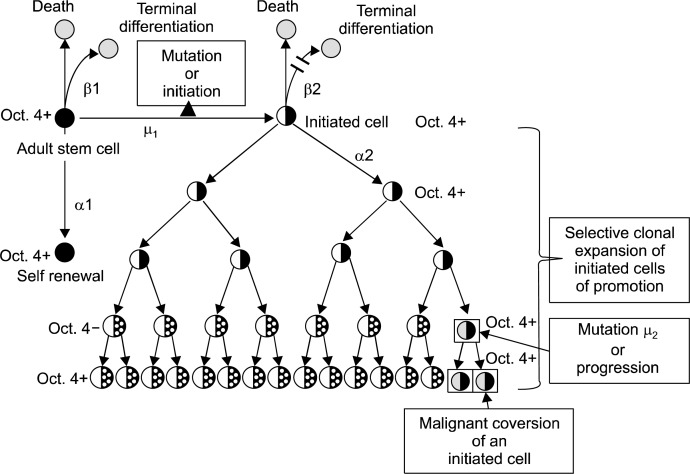Fig. 2.
In this diagram, a normal adult stem cell is shown dividing asymmetrically to form one daughter that is committed to ultimately terminally differentiate. The other daughter is designated to be identical to its mother adult stem cell (Oct-4+). If that adult stem cell is exposed to some condition that prevents asymmetrical cell division, but does not suppress the Oct-4 expression, it is operationally an initiated cell. That is, if mitotically stimulated to divide, it divides symmetrically to form two initiated, non-terminally differentiated cell. Initiation is, then, defined as the process that prevents an “immortal” normal adult stem cell to terminally differentiate or become “mortal”. These adult initiated stem cells are still Oct-4 positive or benign cancer stem cells. As these initiated Oct-4+ cells are stimulated to proliferate and resist apoptosis, the growing benign tumor micro-environment changes, some of these initiated Oct-4+ cells can partially differentiate into “cancer non-stem cells” [Oct-4 negative]. Eventually, additional stable mutational or epigenetic events occur, providing the benign Oct-4+ cancer stem cells to become invasive, metastatic “cancer stem cells”.

